September 20
Dr. Khawar Khan Achakzai
Kashmir has been a geopolitical epicenter of the subcontinent since last five decades. The multifarious aspects of its geography and culture have drawn attention and interests from various corridors of power, sport and literature, all over the world. But, torn up in the conflict since several years, the ‘Paradise on Earth’ seems to be losing certain elements of its identity and culture. Below is a small list of ten things from Kashmir, that might become extinct and the world in future might not see.
Paper mâché: The art was imported from Middle-East in early 15th century and has become an inseparable part of Kashmiri culture. It involves mixing of wood, paper pulp, textiles, different colours and sometimes gold dust on a base of glue, which is very skilfully rendered into paintings and designs on wood, by skilled artisans who would usually inherit the skill from their family. Paper mâché can be used to decorate almost anything like jewellery boxes, lamp shades, decoration pieces etc. During earlier years, paper mâché of Kashmir was considered the state of art, with each item grossing hundreds of dollars in the western markets. The jewellery boxes and pen cases were considered orient symbols of taste and status. Ironically, once considered the emblem of Kashmiri culture, this artwork is on the verge of extinction. The turmoil in Kashmir has made the sales of all the Kashmiri handcrafts uncertain, paper mâché being no exception to it. The workers have to work for months together only to witness killings, curfews and hartals during the period of sales.
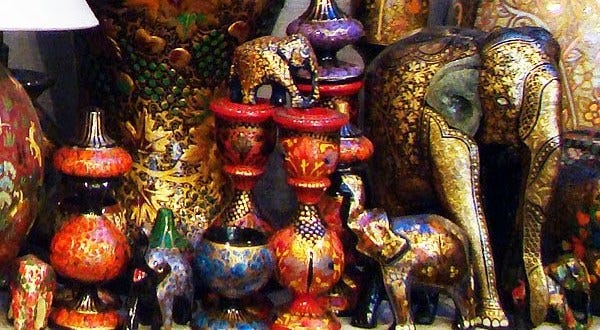
The last few decades have also seen a steep decline in those working in paper mâché ‘Kaarkhanas’ largely owing to the huge discouragement by the government. The government has failed to take any major steps for the artisan community and hence less and less people are ready to learn and take it up as a profession. As such, in a few years, the paper mâché might become archaic in Kashmir and we might be left with only the paper mâché memorabilia from yesteryears.
2. Copper-ware: Copper, called ‘traam’ in vernacular dialects, has been used in Kashmiri households from centuries. The metal is heated, beaten and imprinted upon with beautifully intricate designs and cooled into cauldrons, utensils, tea-pots, jewellery boxes and all sorts of other utilities. Just a few decades back it used to be such an important part of Kashmiri kitchen that a bride would be given her own complete range of copper utensils, lack of which would draw serious castigation from her in-laws. Copper plates would be an important part of lunch and dinner and some would would even ascribe healing properties to the food served in copper dishes.
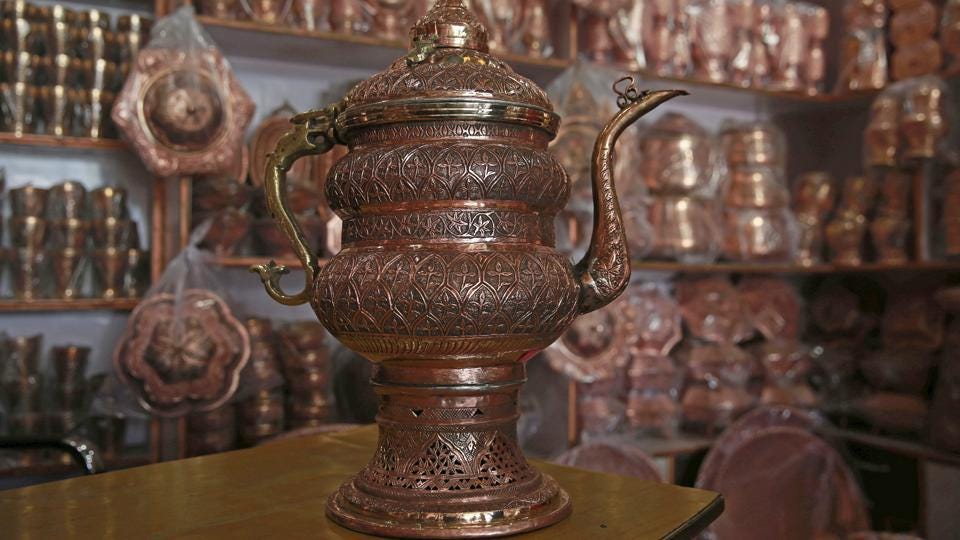
The copper industry is in a phase of decadence. With introduction of cheap ceramic utensils, less people are interested in copper-ware anymore. To add to the injury, frequent killings, protests and shutdowns have further hampered the sales.The government banned any machine work in Kashmiri art in 2006. However, there are some people who learn some skills here and go to other Indian cities for easy money. Because of this, the value of copper utensils has fallen in the market which has affected the popularity of Kashmiri art as people prefer to buy copper utensils which are machine-crafted and relatively inexpensive. While government has failed to provide relief to the suffering craftsmen, the copper ware industry is on its way to extinction.
3. Carpets The carpet industry of Kashmir has its roots in Persia. The carpets made in Kashmir were greatly influenced by the Persian motifs. With the passage of time, the Kashmiri designers, called Naqaashs started giving their own impressions and designs to the carpets. The carpets were traditionally made of silk or wool or sometimes the mixture of both. The carpet industry had huge markets in west and Middle-east, owing to their intricate details and long durability.
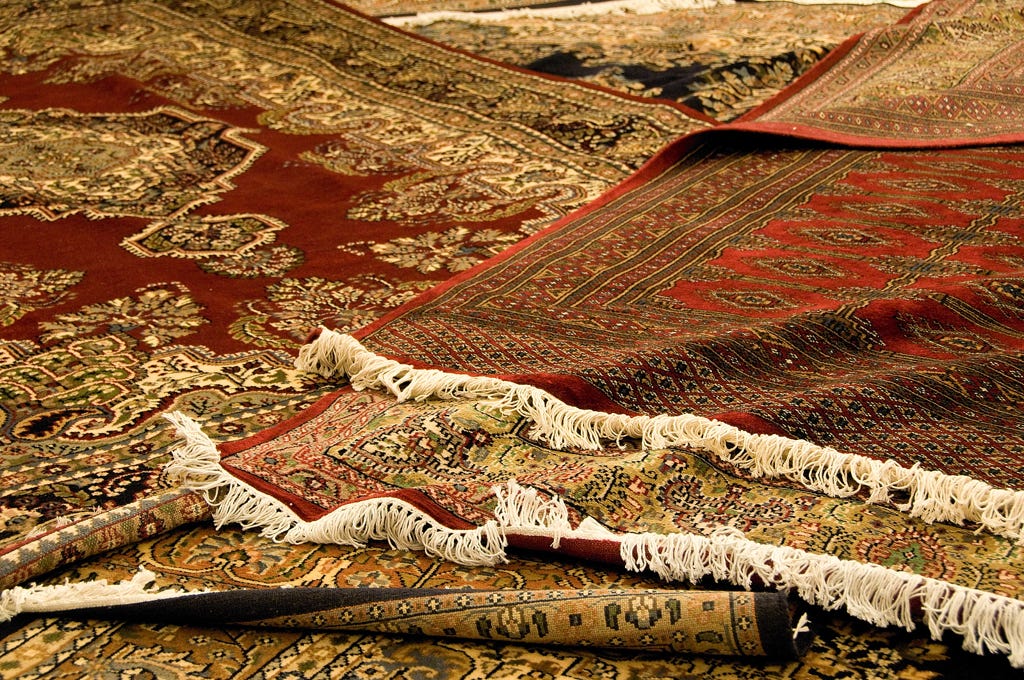
Talking to one of the leading carpet merchants of 70’s, he said, ‘We used to have long lines of customers, from countries as far as Kuwait, but now the art is dead, we live in utmost poverty, the weavers called kalimbas wouldn’t want to spend the whole winter weaving just to witness a bloody and a stagnant summer, people are leaving.’ There have been no major steps towards the rehabilitation of the Kalbaafs (carpet makers). Our future generations might see nothing more than the remnant rags from the past and would hear stories about the ‘tree of life’ which was drawn in the centre of each Kashmiri carpet.
4. Saffron: The botanical name of Saffron is, Crocus sativus. It has been used as a spice and a colouring agent since centuries. It is recorded that the Phoenicians, in 600 B.C, were looking for a mysterious plant in Kashmir that had a peculiar aroma and silky stigmas and was believed to be a cure for numerous illnesses. It was later used by europeans, the Arabs and the Jews and is often mentioned in some of the very important historic and religious scriptures. In the recent times it also finds its use in other industries like cosmetics, alcohol, tobacco etc. The plant was originally imported from Iran, which still continues to be the leading producer of the crop, but Kashmir has the privilege of producing the best quality Saffron, which is sometimes as expensive as 3 lakhs Indian Rupees per Kilo. The Kashmiri saffron is grown mainly in the fields of Pampore on the outskirts of Srinagar and its adjacent areas Khrew, Ladhoo, Chandhara, Samboora and Wuyan.
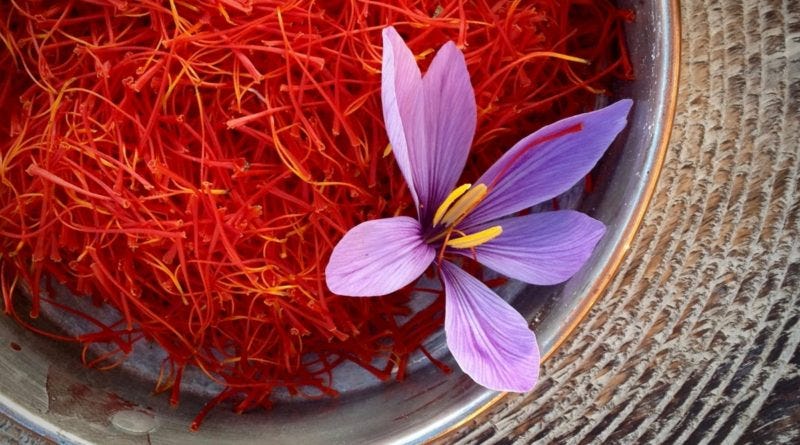
However, the crop production is on a decline since 2005. In 2005, the production of saffron flower per Kanal was 15–20 kilograms which reduced to 1–1.5 kg in 2016.The area under saffron cultivation has also declined from 5,707 hectare in 1996–97 to 3,785 hectare in 2014–15, bringing down the production from 3.13 kg per hectare to 1.88 kg per hectare in the last few years. As such, in a few years the kehwa served to the future generations will be colourless.
5. Kashmiri Hangul (Kashmiri Stag): The zoological name of the Kashmiri Hangul is Cervus elaphus hanglu. It is the state animal of Jammu and Kashmirand is characterised by its reddish brown coat and spreading antlers. Once distributed throughout the Himalayan region, the animal is now restricted largely to the Dachigam wildlife sanctuary.
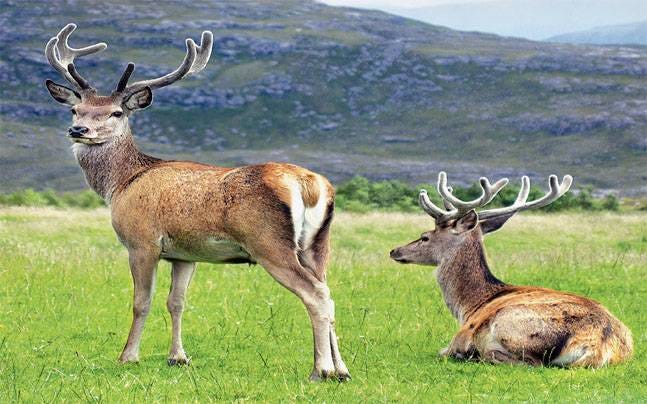
The Hangul is poached for its meat, skin and antlers and according to a census its population has declined from 2000 in 1947 to 186 in 2015. Other reasons responsible for the decline in its population include excessive human interference in its habitat in form of grazing, grass cutting, firewood collection and presence of hundreds of CRPF vehicles and troopers in its habitat.
6. Dal Lake and other waterbodies: Dal lake, once known as the jewel in the crown of Kashmir, is choking itself on pollution, sewage, and encroachment. The discharges from houseboats, hotels and offices have made the waters of Dal murky and abominable. There are hundreds of illegal constructions around and inside the lake itself.
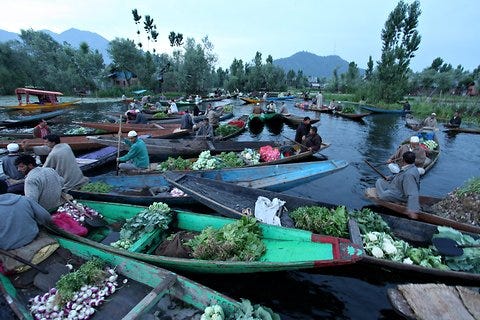
The government has often taken initiatives to clean the Dal, but such cleaning and de-weeding is usually around the tourist attractions and SKICC. With the rate of filling and constructions around Dal, we may soon have to bid it an adieu, inspite of it being the spine tourist industry. Other water bodies like Ancharlake are hardly talked about and have been been converted into dumping grounds by the locals.
7. The street theatre ‘Laddi-Shah’: Laddi Shah is form of street theatre of Kashmir. The ‘Laddi-Shah’, often a middle aged man, with an iron rod in his hand, wearing a Kashmiri cloak and a dastaar (headgear)
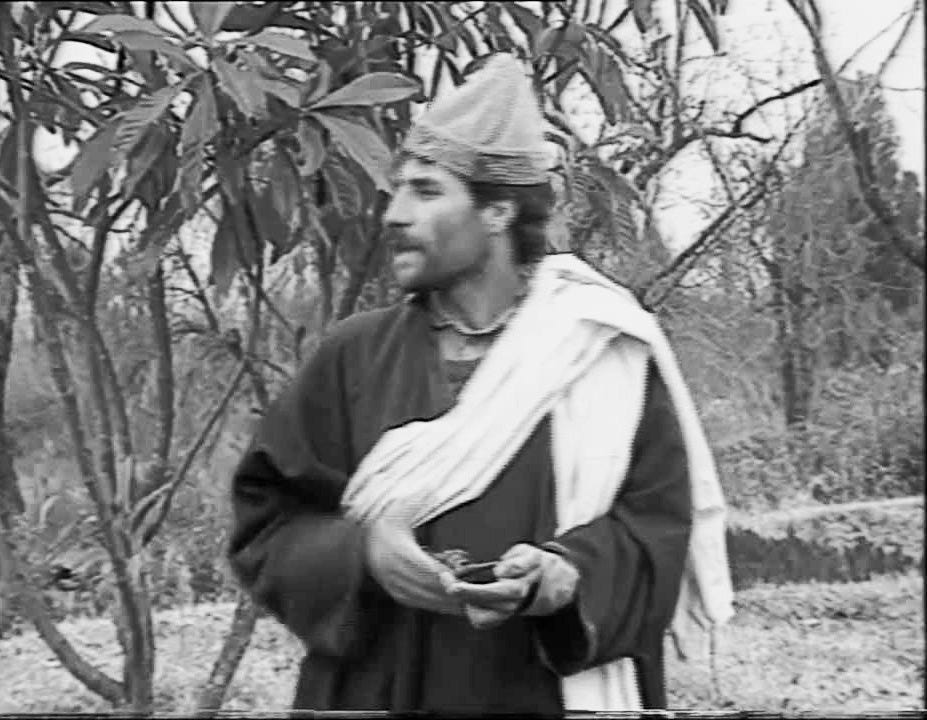
would recite his satirical composition in a sarcastically lyrical flow and metre. The composition usually highlighted the political and social caveats and often pointed towards the evils in the society.
8. Koshur: Kashmiri language, or Koshur belongs to Dardicsubgroup of languages. It is spoken mainly in Kashmir valley and Chenab valley. There are around 5.5 million speakers in Indian occupied Kashmir and around 1.3 lakh speakers in Azad Kashmir. It is one of the very few languages that can be written in more than one script i.e. Sharada script, Devanagiri script and Persio-Arabic script and has a literature that dates back to over 750 years. The writings of Habba Khatoon, Mahmud Gami, Rasul Mir, Shamas Fakir, Wahab Khar, Mehjoor have been the subject of study and discussion by renowned academicians all over the world.
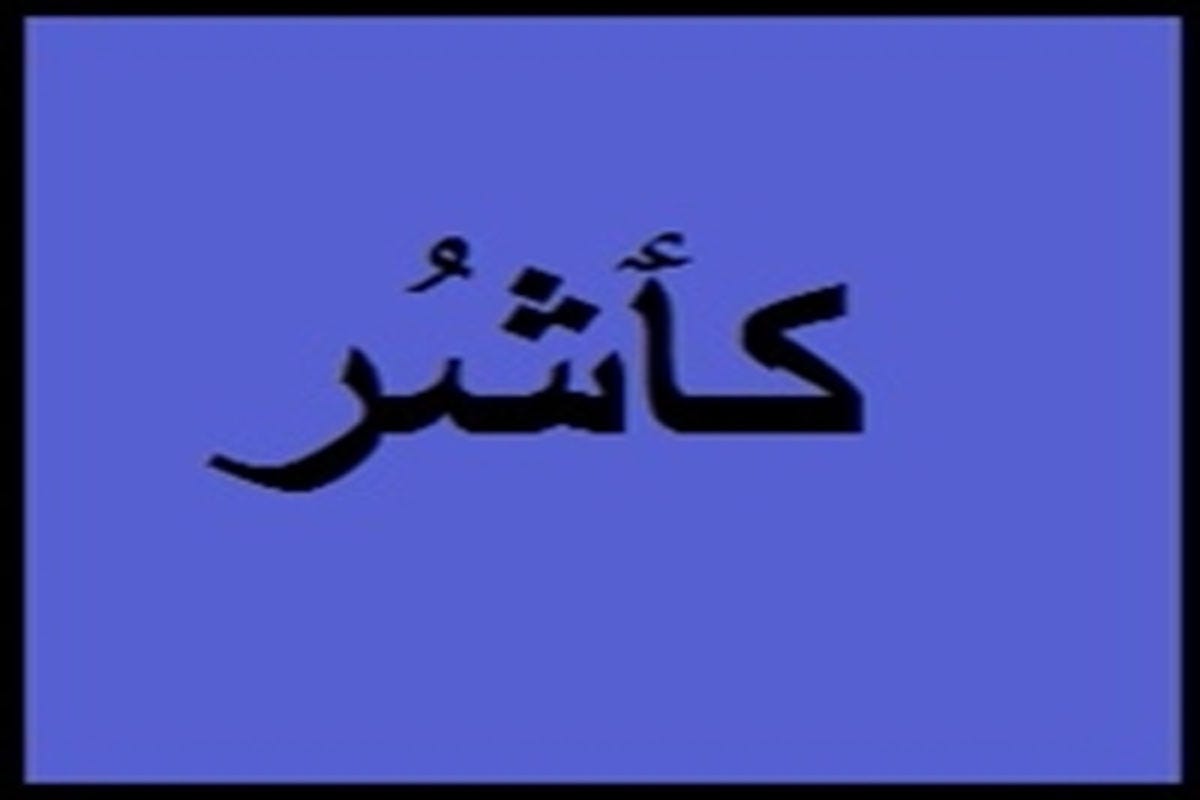
The language has met a step-motherly treatment from centuries. The preferred languages for documentation of history in Kashmir have been Persian and Urdu. In a research on Dying Linguistic by Braj.B.Kachrn, he has referred that, “In the interplay of language, politics and power, the Kashmiri language never received patronage from the powerful and the court, except for a short duration during the reign of Sultan Zain-ul-Abidin.” Same is true for current times when the governments aren’t doing enough to encourage reading and writing in Koshur. Despite being a rich and dynamic language with colossal literature, Koshur is looked upon as an odd language in our schools and colleges. It is an irony that students are fined for speaking in Kashmiri language in some private schools, the reason behind this could be a deliberate instillation of an inferiority complex regarding our past. Today we are ashamed of writing in Kashmiri and those who aren’t they simply cannot, because nobody taught them ever. Koshurremains a stranger in its own country.
9. History ‘Tareekh-e-Kashmir’ : Before Muslims took over the throne of Kashmir in 1332 C.E, it had been ruled by 21 dynasties of Hindus, Buddhists, Jains and Zoroastrians, 18 of whom were native. During the Muslim rule which was for about 450 years there were around 300 years of complete independence. The major blow to the independence of Kashmir was when the Dogra king Gulab Singh came into power after the British had conquered it from the Sikhs in 1846 and sold it to Dogras like a commercial commodity for 7.5 million, with a right given to the purchaser to treat the residents as cattle.
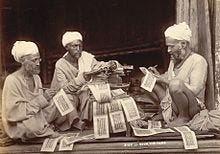
There are hardly few historians who can expound upon all these events inspite of the fact that we have a written history of thousands of years in the works of Baba Khalil Mirjanpuri, Syed Muhammad Shah Saadat, Mullah Ahmad Kashmiri and Urdu writers like Muhammad Din Fouq who wrote Tareekh-e-Kashmir. The younger generations are taught the history of India instead of teaching them about our own past. Our history is gasping on its death bed.
10. Kashmiris: The last in the list are the citizens of Kashmir, The Kashmiris. Kashmir is one of the most militarised zones in the world, with three powerful nuclear nations i.e India, Pakistan and China being at loggerheads over it. The conflict in Kashmir has seen killings of tens of thousands of Kashmiris and grotesque human rights violations in form of mass rapes, torture, extortion, use of lethal weapons like bullet and pellet guns over the last three decades. With a political stalemate between India and Pakistan, the conflict and its consequences are likely to continue, so are the number of people dying or at the risk of death. As such, Kashmiris are one of the most endangered people on earth and the whole race suffers a risk of extinction.
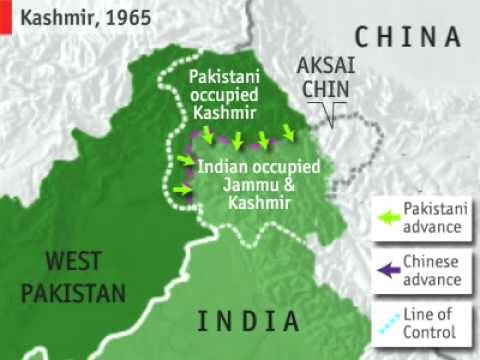
(Khawar Khan is a published author, social activist and a doctor by profession who serves in Kashmir and can be mailed at stoneghoo@gmail.com)
